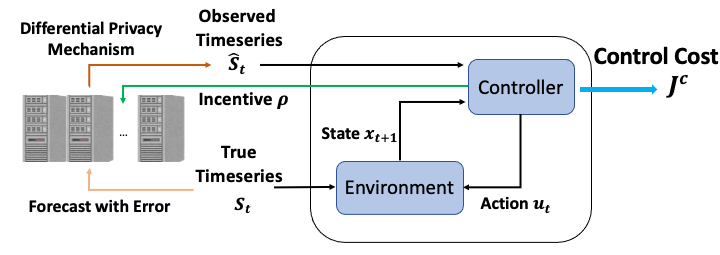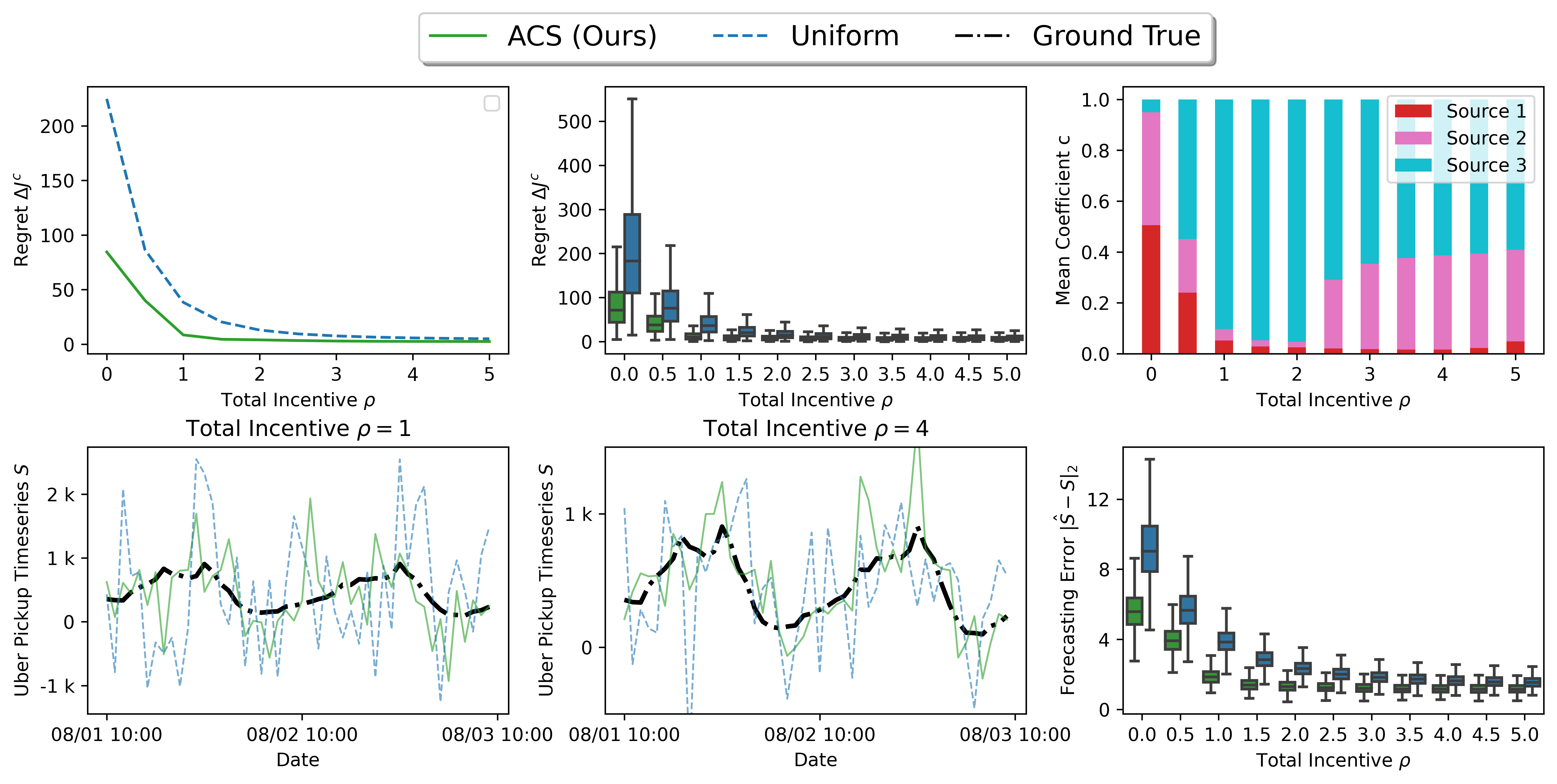Differentially Private Timeseries Forecasts for Networked Control: Protecting Privacy without Sacrificing Accuracy
posted on May 28, 2023
By Po-han
Introduction
In the age of interconnected systems and data-driven decision-making, accurate forecasting plays a crucial role in optimizing control strategies. However, concerns regarding data privacy have led to the introduction of anonymization noise in forecasting models, which compromises their accuracy. Balancing the need for accurate forecasts and the privacy of input data is a challenging problem. In our recent paper titled Differentially Private Timeseries Forecasts for Networked Control, we propose a novel approach to address this trade-off by providing economic incentives to forecasting models while minimizing control costs. In this blog post, we will delve into the key insights and findings of this paper.

The Challenge
Accuracy vs. Privacy Forecasting models rely on historical data to make predictions about future events. However, sharing this data openly poses privacy risks. To address this concern, anonymization noise is added to the data, which reduces the accuracy of the forecasts. The challenge lies in finding the optimal balance between accuracy and privacy, considering the cost implications of control decisions based on imperfect forecasts.
The Proposed Solution
We propose an approach that allocates economic incentives to forecasting models to encourage them to reduce anonymization noise while maintaining acceptable privacy levels. By reducing the noise, the accuracy of the forecasts improves, leading to better control decisions. We tackle this problem through a biconvex optimization framework, specifically focusing on linear quadratic regulators (LQRs), which are widely used in control systems.
Comparing Incentive Allocation Schemes
To evaluate the effectiveness of their proposed approach, we compare it to a uniform incentive allocation scheme. The results are promising, as the proposed solution demonstrates significant cost reductions. In the case of synthetic timeseries, control costs decrease by 2.5 times, while for the Uber demand forecast, costs decrease by 2.7 times. These findings highlight the potential of incentivizing forecasting models to enhance their accuracy without compromising privacy.

Implications and Future Directions
The research presented in this paper has important implications for networked control systems and the broader field of data privacy. By providing economic incentives to forecasting models, decision-makers can strike a balance between accurate forecasts and privacy protection. The findings of this study pave the way for future research on privacy-preserving forecasting techniques and incentive mechanisms in control systems.
Conclusion
Our paper “Differentially Private Timeseries Forecasts for Networked Control” introduces an innovative approach to address the accuracy-privacy trade-off in forecasting models. By allocating economic incentives to forecasting models, control costs can be significantly reduced while maintaining acceptable privacy levels. This research opens new avenues for improving decision-making in networked control systems while safeguarding sensitive data. As the field progresses, we can expect further advancements in privacy-preserving techniques and incentive allocation mechanisms, ultimately benefiting both accuracy and privacy in various domains.